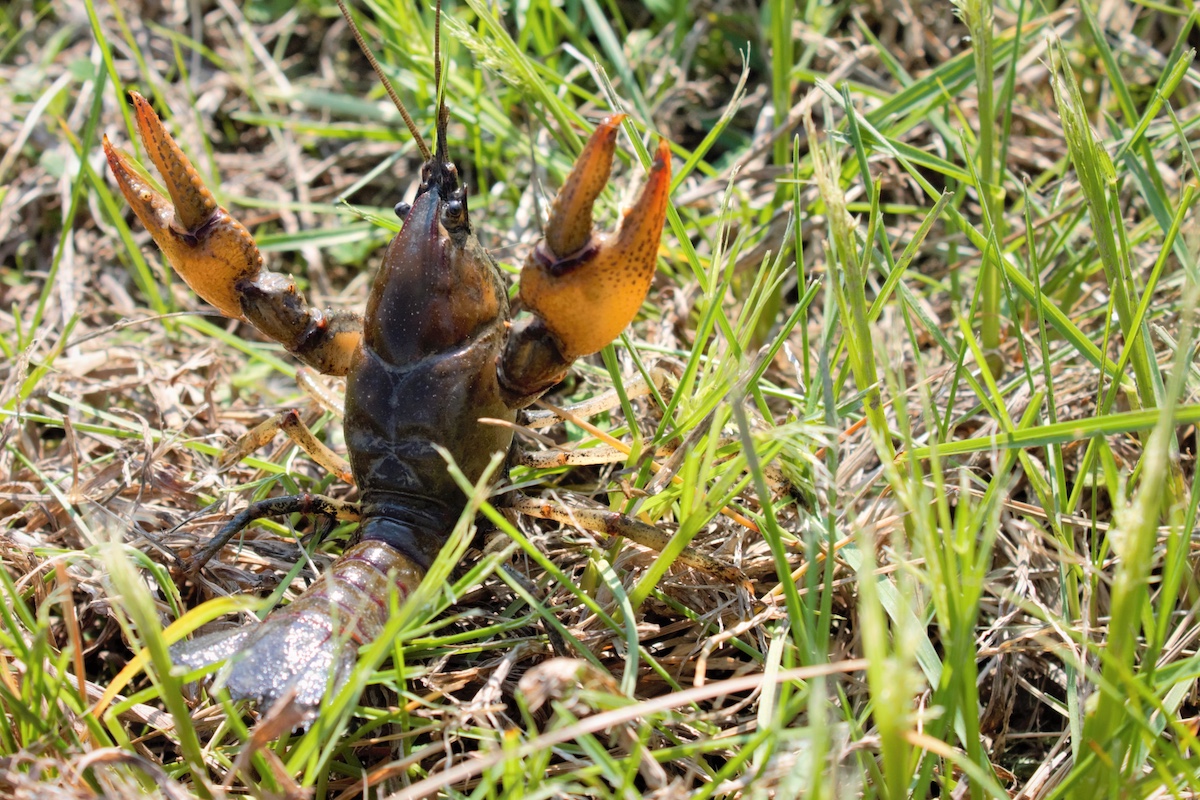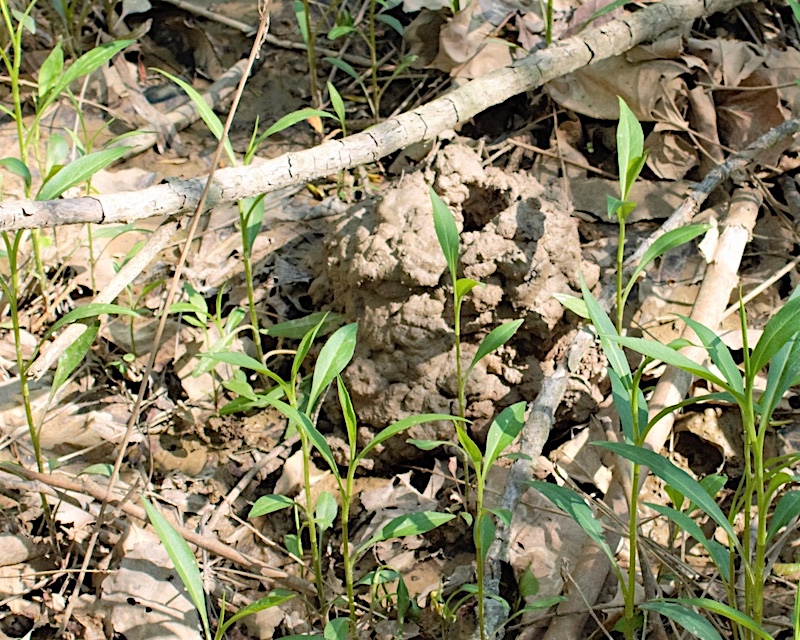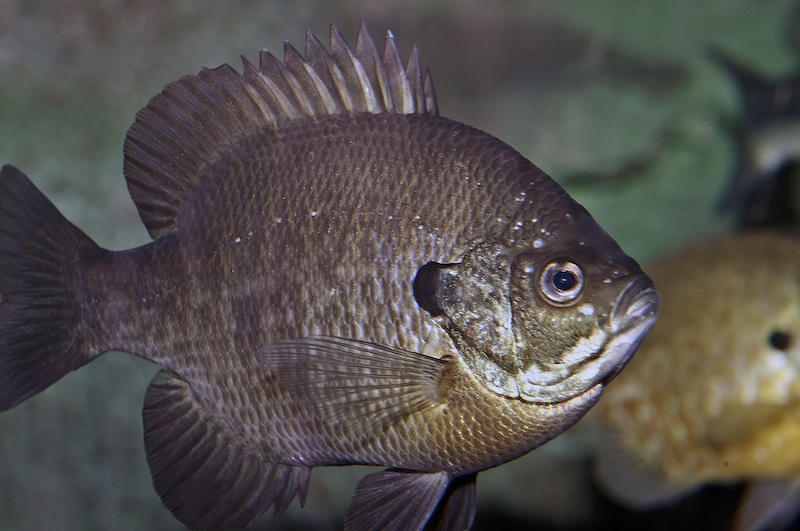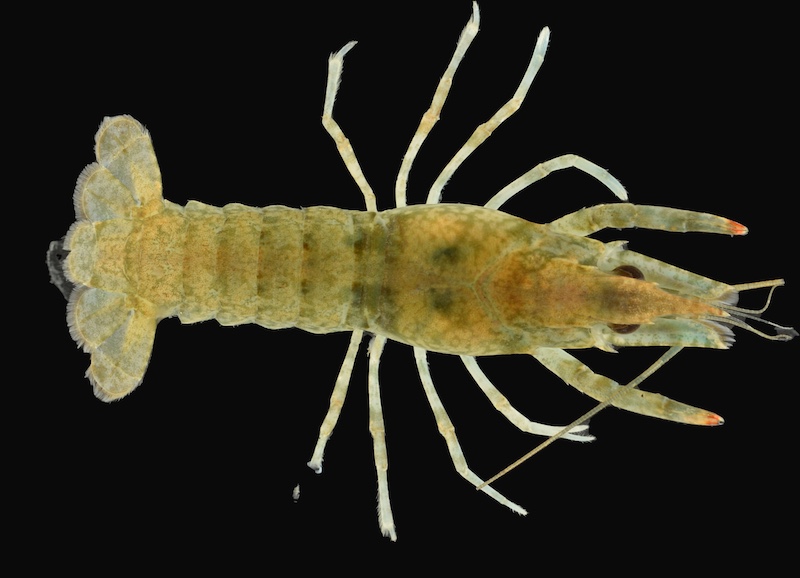
Lacunicambarus chimera (crawzilla crawdad) is a burrowing species from southern Illinois. Photo by Dusty Swedberg.



Lacunicambarus chimera (crawzilla crawdad) is a burrowing species from southern Illinois. Photo by Dusty Swedberg.
In Illinois’ streams, rivers, lakes, wetlands, and even roadside ditches, there is an often-overlooked organism that can play a critical role in a well-functioning lotic system. These critters are often nondescript to the untrained eye, but when you take a closer look, there is abundant and fascinating diversity here in Illinois. Those organisms, commonly known as crayfish, crawfish or mudbugs, make up a significant amount of biomass in many Illinois systems.
More than 400 species of crayfish exist in the United States alone, and Illinois is home to 25 of those species of crayfish, two of which are endemic to the state of Illinois, meaning they occur nowhere else in the world except right in our backyards.

Speaking of backyards, many crayfish can be found in backyards or the ditches around your house or lining the roadways. People often see their homes in the form of burrows, which are small holes (on average the size of a golf ball) that are dug down into the soil until the water table is reached, where burrowing crayfish will spend a large majority of their lives. Illinois currently has six known species of burrowing crayfish, which occur in every corner of the state where they have access to the water table.
Burrowing crayfish live a discreet life, often well away from the peering eyes of predators and people. But just because they are not often seen does not mean they do not play critical roles in their environments as well. Burrowing crayfish are an important organism in the remaining wetlands and prairies throughout Illinois. They help distribute nutrients in the soil from burrowing activities. Their burrows create additional avenues of transportation for water and other nutrients to deeper levels of the soil.
Burrowing crayfish also provide habitat for numerous other species in these areas. The federally threatened eastern massasauga rattlesnake uses crayfish burrows to overwinter and as a summer refuge. The aptly named crawfish frog will spend the majority of its time using crayfish burrows. However, it is not just amphibians and reptiles that use these burrows; the Hines emerald dragonfly, a federally endangered species, will also use crayfish burrows in their larval or nymph stage.
In Illinois streams, crayfish are considered a keystone species, meaning that their presence in ecosystems serves a critical role to multiple levels of the food web. There is a saying in the crayfish world that when it comes to streams, crayfish eat everything and everything eats crayfish. Crayfish are considered scavengers, often breaking down organic matter, such as leaves and plants, in streams, as well as decomposing fish and other organisms that have perished and entered the water. They are also primary consumers feeding on algae and other aquatic plants.
Crayfish can also fill the role of predators, catching and consuming larval insects, fish and snails. Then, finally, crayfish are also a primary prey source for many types of animals in and around streams. Mammals such as mink, otter, and raccoons are known to snack heavily on crayfish they catch.

Crayfish are also an important food source for many of Illinois’ most common and sought-after sport fish, which often consume a large portion of the total annual crayfish production in a stream. From the time crayfish are born, they are usually trying to escape predation from juvenile bluegill and bass until they are large adults, where they are still trying to hide and escape from the same fish that tried to consume them as juveniles. Even we humans will partake in the consumption of crayfish if we are so inclined. In Louisiana, crayfish are a critical component of local and state economies.
It’s not just burrowing crayfish that alter their environments to meet their needs; stream-dwelling crayfish also move substrates, dig under rocks and break down detritus, creating unique habitats not only for themselves but also for fish and larval insects.
Like many other aquatic species, crayfish are facing significant threats to their habitat, which in turn affects their persistence.
One of the most significant dire threats is posed by some of their own kind. Invasive crayfish (link to Reuban’s story) from outside their native ranges have entered many of Illinois’ waterways through bait bucket introductions. Invasive crayfish can often outcompete native crayfish for critical resources, such as cover and food. These invasive crayfish will move from the introduced site and displace most, if not all, native crayfish from their previously inhabited stream reaches.
Other threats to crayfish include loss of habitat through urbanization, stream channelization, and conversion of wetland, prairie and forested habitats to agricultural land. From this conversion of land, there is often an increase in sedimentation, which fills the spaces around rocks and other forms of cover that crayfish need to hide from predators, and it provides them with a place to hunker down during extreme high and low flow events.

Although crayfish play crucial roles in a wide range of ecosystems, they remain one of the most understudied and overlooked organisms worldwide. Recently, crayfish have gained traction in certain circles to the point where some species in the U.S. have been recognized as threatened with extinction and thus merit listing status. According to the Illinois Endangered Species Protection Board (2020), Illinois has four endangered crayfish: Indiana crayfish (Faxonius indianensis), Kentucky crayfish (Faxonius kentuckiensis), shrimp crayfish (Faxonius lancifer) and bigclaw crayfish (Faxonius placidus).
Unfortunately, many of these listed species are under direct threat from invasive crayfish species, and the loss of diversity from specific ecosystems will most certainly have unforeseen consequences on ecosystem health and function.
Research continues to be published yearly that uncovers hidden diversity, with new species being described regularly —a relatively uncommon occurrence for such a large organism, especially in North America. Until relatively recently, the positive significant impact that burrowing crayfish have on wetlands and prairies went largely unnoticed. The vital role that crayfish play in nutrient cycling in streams and on the landscape is also a surface that is just beginning to be scratched.
Hopefully, future research and discoveries on these truly remarkable creatures will help them shed their nondescript, often overlooked past and bring them into the public eye, so they can be seen for how truly remarkable and vital they are to the areas we love.
Dusty Swedberg is an Aquatic Ecologist with the Illinois Natural History Survey, Prairie Research Institute at the University of Illinois, Urbana-Champaign. He has worked with crayfish as a study organism for almost 15 years. His current research focuses are stream ecology, astacology, threatened and endangered species, non-game aquatic species, and the effects of transportation infrastructure impacts on riverine systems.
Submit a question for the author